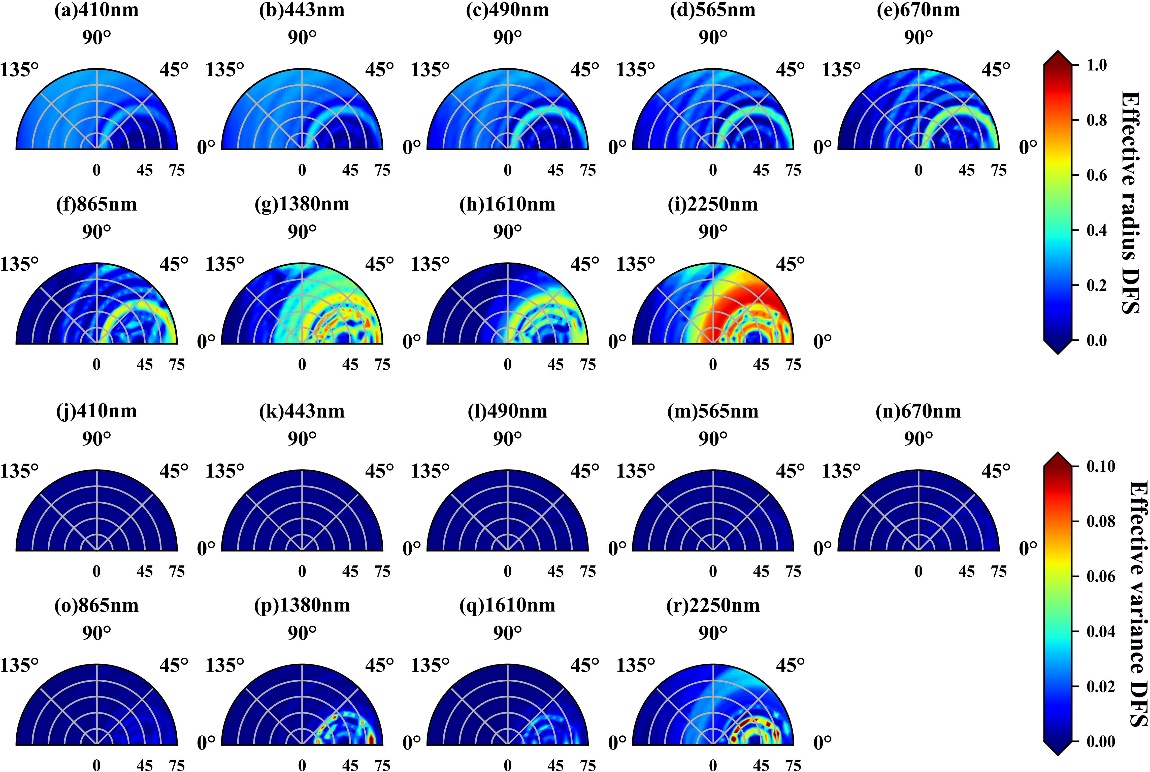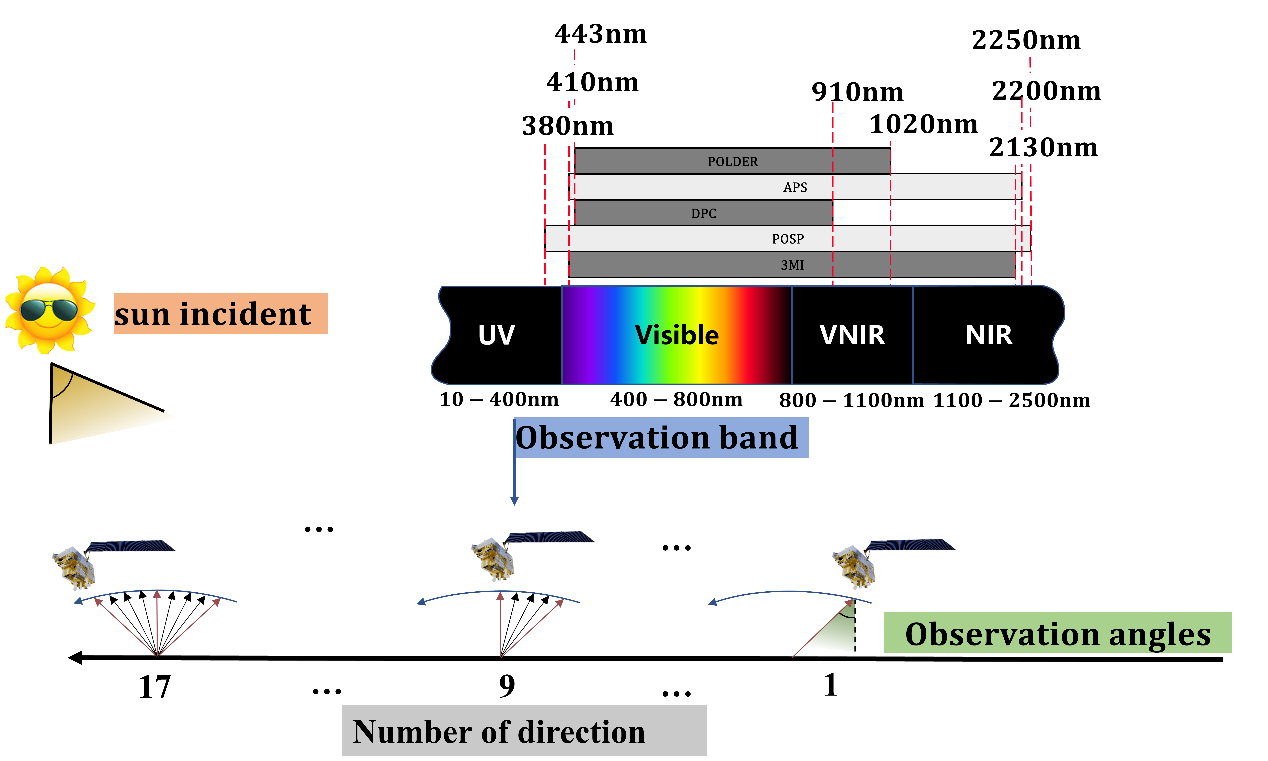
Recently, a research team from the Hefei Institutes of Physical Science of Chinese Academy of Sciences, evaluated the information content associated with polarization crossfire (PCF) measurements for retrieving the particle size distribution (PSD) of water clouds, and identified key factors affecting their retrieval in multi-directional polarized observations.
The research results were published in Optics Express, providing insights into spectral considerations, observation angles of optical instruments, and criteria for retrieval algorithms.
The PSD of water cloud is closely related to the optical and microphysical properties of clouds, which are crucial for understanding atmospheric interactions. With the rapid development of optical technology, performance of satellite sensors has greatly improved. However, the accurate translating of image quality relies on the effectiveness of retrieval algorithms. This presents a difficulty in determining whether inaccuracies in the output result from insufficient setup of optical devices or flaws in the retrieval algorithms.
In this study, scientists developed a way to evaluate how much different factors contribute to our understanding of clouds. They used radiation transfer simulations and a method called Bayesian optimal estimation analysis. By studying light transmission from clouds to sensors, they found that polarized measurement could improve our knowledge of cloud particle sizes by 48%.
They also found that the number of cloud droplets impacts understanding, but size variety doesn't necessarily complicate things. However, mixed particle sizes reduce measurement accuracy. In conditions with few particles or very thick clouds, effects from aerosols or ground reflections can be ignored.
This research may optimize the evaluation metrics for optical devices, laying the foundation to further enhance the application accuracy of spaceborne instruments.

Subfigures (a-i) and (j-r) respectively illustrate the degree of freedom (DFS) for signals contained in polarization measurement of a single-band when considering the particle effective radius and variance as state vectors. (Image by YU Haixiao)

Researchers evaluated the information content associated with PCF measurements for retrieving PSD of water clouds. (Image by YU Haixiao)